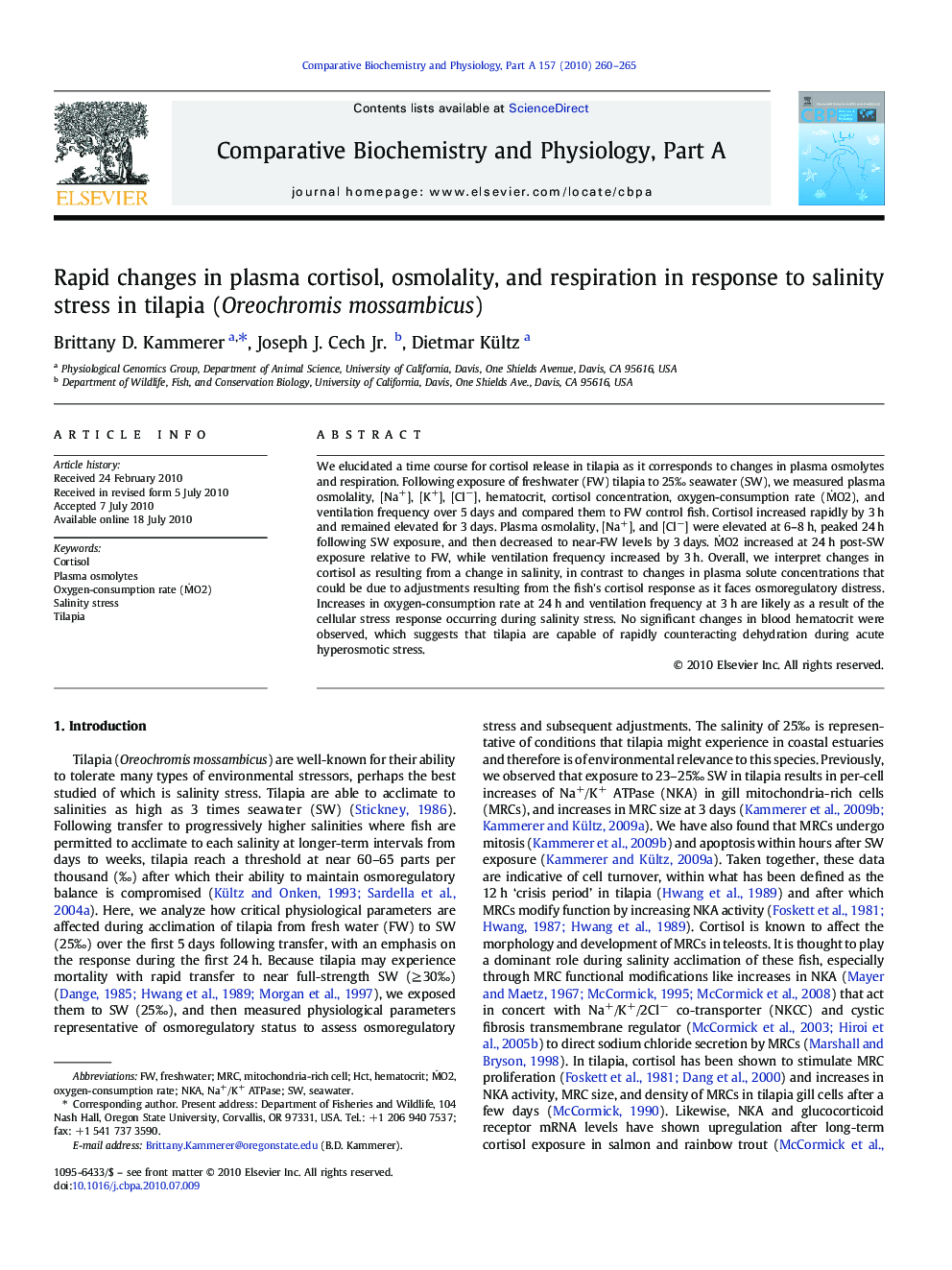| کد مقاله | کد نشریه | سال انتشار | مقاله انگلیسی | نسخه تمام متن |
|---|---|---|---|---|
| 1974107 | 1060337 | 2010 | 6 صفحه PDF | دانلود رایگان |

We elucidated a time course for cortisol release in tilapia as it corresponds to changes in plasma osmolytes and respiration. Following exposure of freshwater (FW) tilapia to 25‰ seawater (SW), we measured plasma osmolality, [Na+], [K+], [Cl−], hematocrit, cortisol concentration, oxygen-consumption rate (ṀO2), and ventilation frequency over 5 days and compared them to FW control fish. Cortisol increased rapidly by 3 h and remained elevated for 3 days. Plasma osmolality, [Na+], and [Cl−] were elevated at 6–8 h, peaked 24 h following SW exposure, and then decreased to near-FW levels by 3 days. ṀO2 increased at 24 h post-SW exposure relative to FW, while ventilation frequency increased by 3 h. Overall, we interpret changes in cortisol as resulting from a change in salinity, in contrast to changes in plasma solute concentrations that could be due to adjustments resulting from the fish's cortisol response as it faces osmoregulatory distress. Increases in oxygen-consumption rate at 24 h and ventilation frequency at 3 h are likely as a result of the cellular stress response occurring during salinity stress. No significant changes in blood hematocrit were observed, which suggests that tilapia are capable of rapidly counteracting dehydration during acute hyperosmotic stress.
Journal: Comparative Biochemistry and Physiology Part A: Molecular & Integrative Physiology - Volume 157, Issue 3, November 2010, Pages 260–265